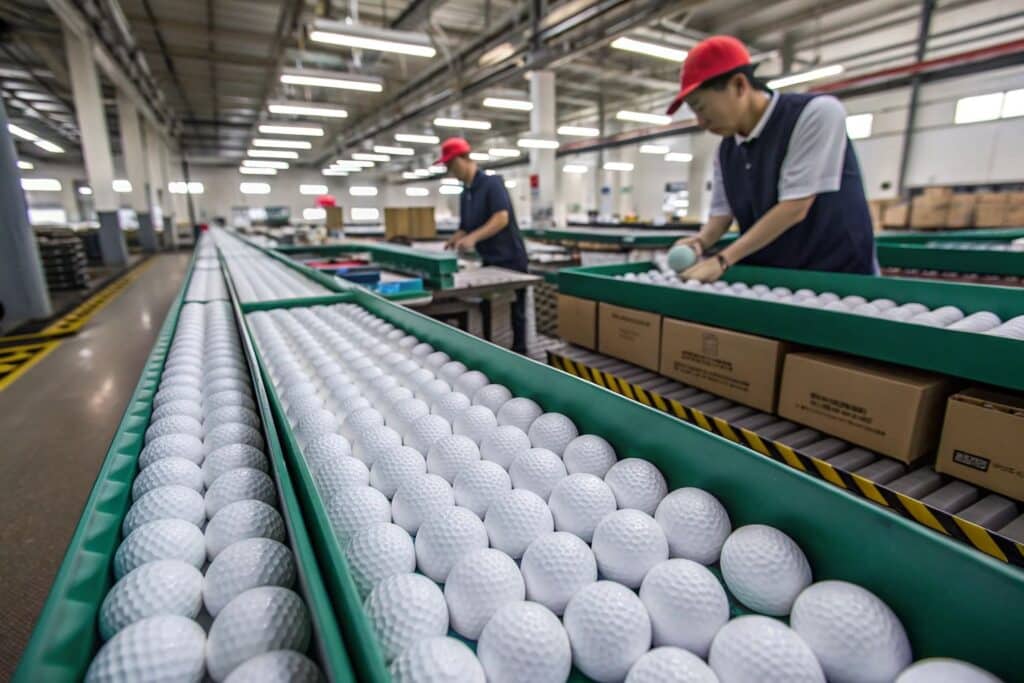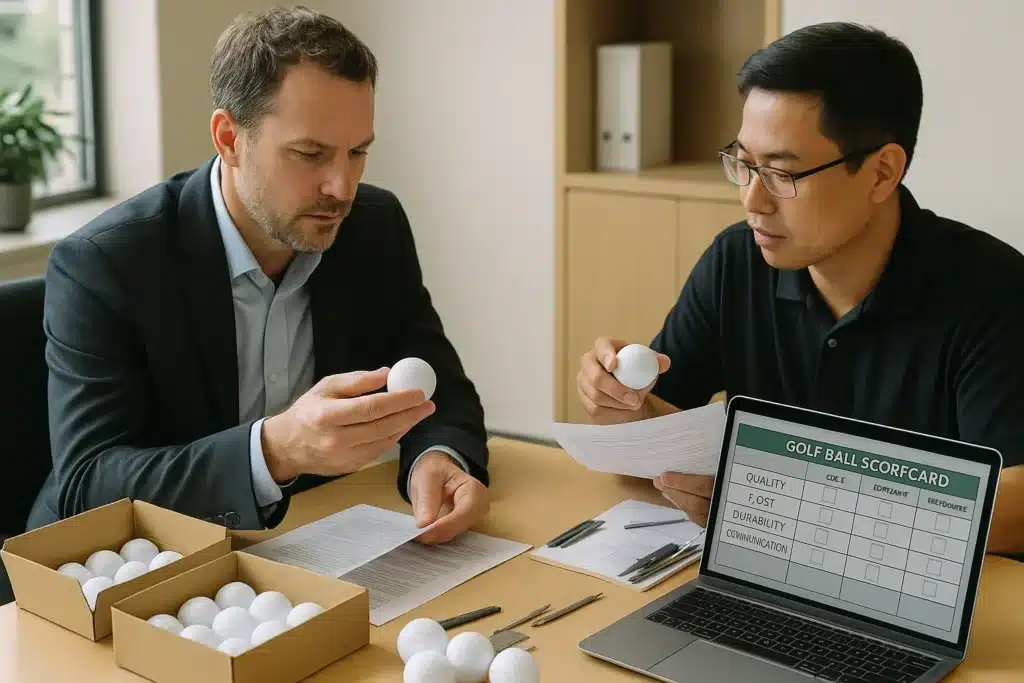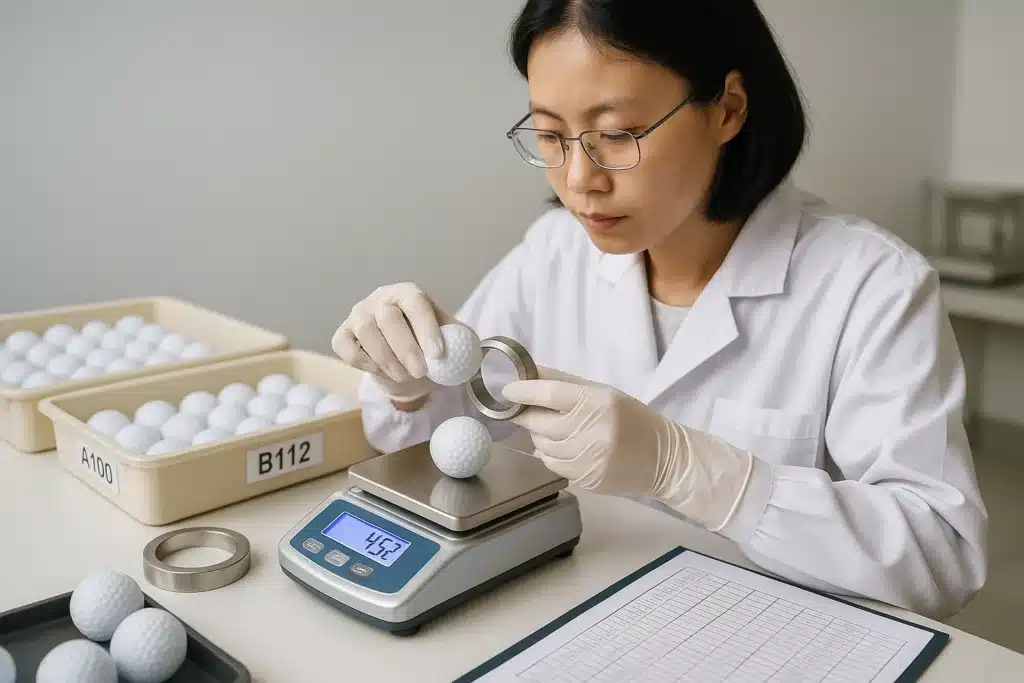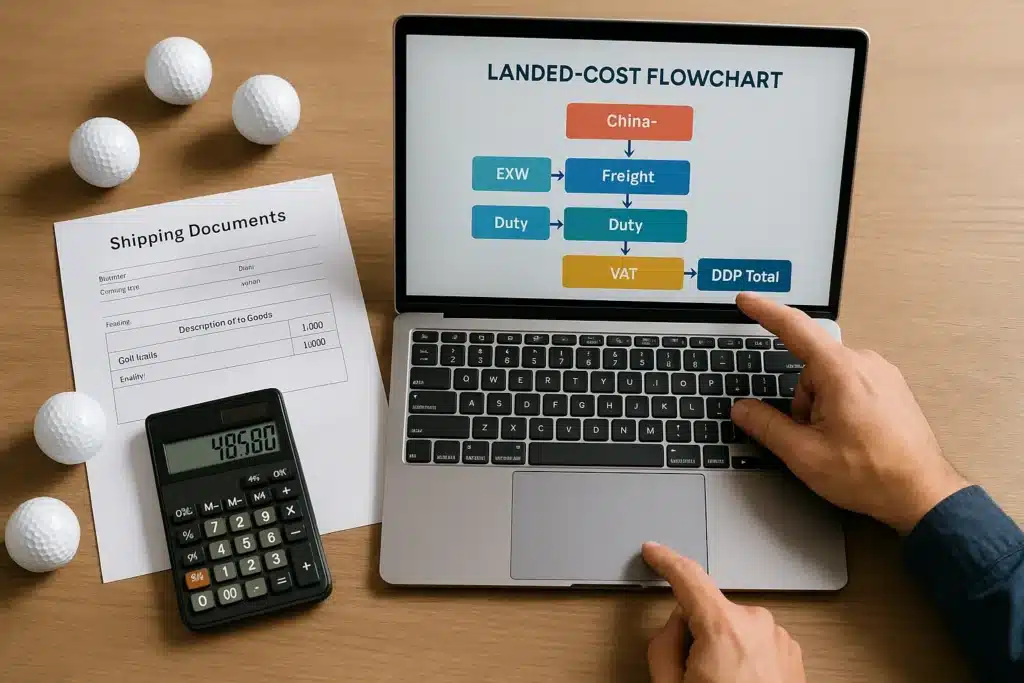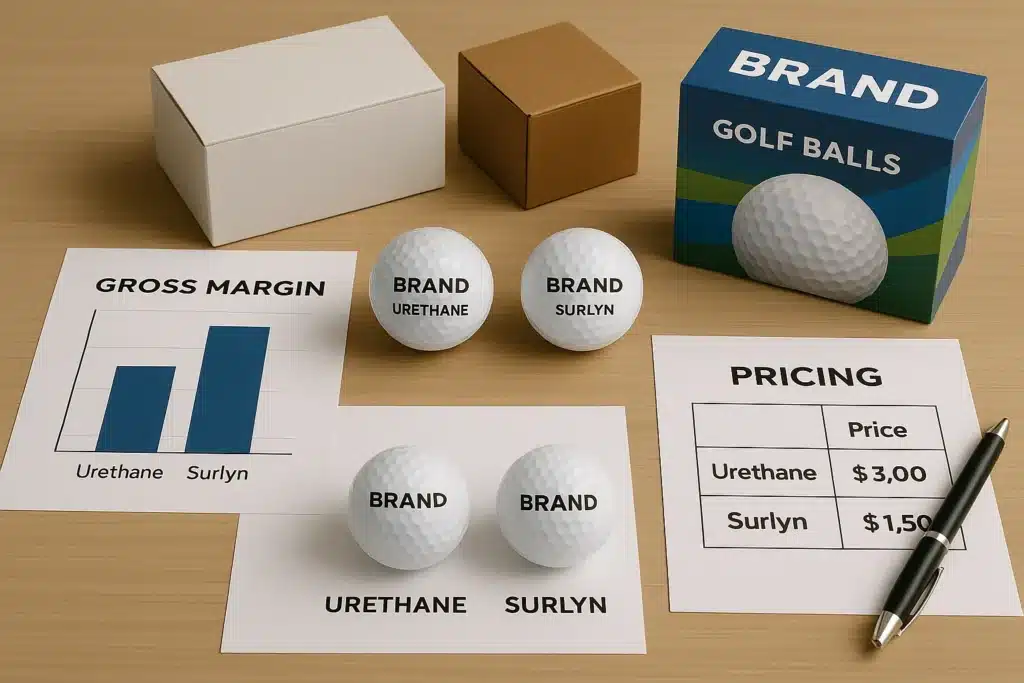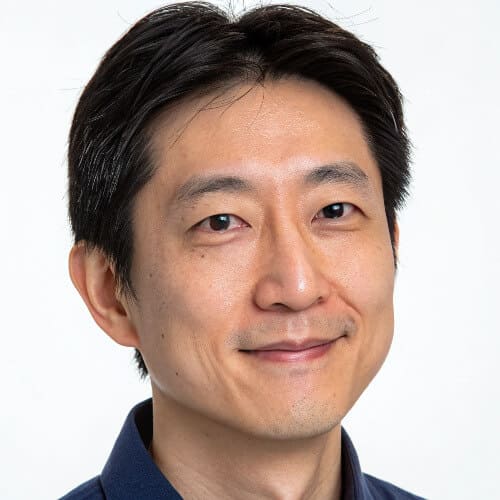Yes, over 60% of surlyn golf balls sold worldwide are made in China, mainly by OEM factories in Guangdong and Fujian. China leads the global golf ball production market due to scale, material availability, and cost efficiency. But quality and certifications vary. This Q\&A guide answers what buyers must know in 2025.
Are most golf balls made in China now?
Yes, over 60% of surlyn golf balls sold worldwide are made in China, mainly by OEM factories in Guangdong and Fujian.
China dominates surlyn-cover golf ball production, especially for entry-level and mid-market lines. While premium urethane models are still largely made in the US and Japan, China remains the global base for surlyn-based mass production. Most factories are located in Dongguan, Xiamen, and Quanzhou.
Global production split by region
China, Taiwan, and Vietnam collectively account for nearly 80% of golf ball manufacturing. China leads in surlyn balls, Japan and the US in high-end urethane. US-made balls dominate tour-level performance, while Taiwan offers niche customizations.
Why surlyn is favored for mass production
Surlyn is cheaper, more durable, and easier to mold than urethane, making it ideal for OEM scaling. It suits recreational, promo, and price-driven applications. The material tolerates high-speed injection and lower reject rates.
Key OEM regions in China
Guangdong and Fujian provinces are home to 80% of China’s golf ball OEM capacity. These regions offer skilled labor, resin access, and logistic ports. Buyers often choose Dongguan or Xiamen due to factory clusters.
Factory export capacity data
Tier-1 factories in China ship 500,000–1.5 million balls per month, often under private labels. Output varies based on coating line automation and mold variety. Many factories maintain dual-shift production cycles.
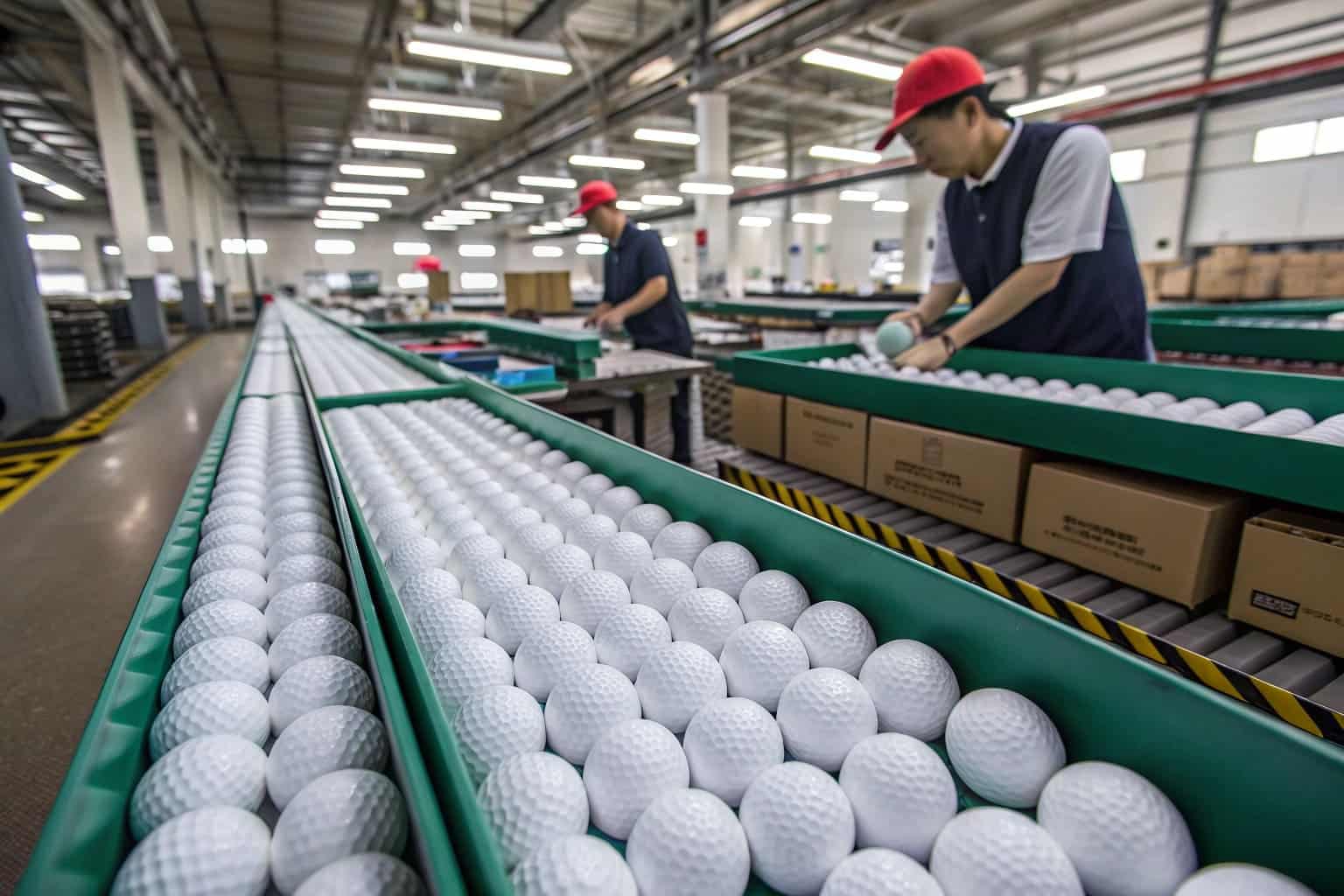
How do Chinese-made golf balls compare in quality?
Top-tier Chinese factories can match US or Japan quality levels with strict QC and premium materials.
Quality varies greatly depending on factory tier, resin source, and testing protocols. Some factories use imported urethane and CNC compression testing; others rely on lower-cost blends and manual checks.
Quality tiers in Chinese production
Tier-1 plants offer multilayer balls with <±3 compression variance and precise dimple molds. They often hold ISO and SGS certifications. Lower-tier facilities may show bonding inconsistency or batch variation of up to ±10.
How buyers verify ball construction quality
Request test reports for compression, weight tolerance, and spin performance. Use third-party labs or ask for ASTM conformity if needed. Some buyers also send sample orders to domestic simulators for player feedback.
Typical flaws to watch for
Look for seam visibility, paint cracking, and uneven dimple depth in lower-cost balls. These signal material or process shortcuts. Paint issues often emerge within 50–100 hits; poor dimple depth affects flight predictability.
Clarification Module
✅ Not all golf balls made in China are low quality · True
Top factories meet global QC benchmarks and supply many US and EU brands under NDA.
What materials are used in Chinese golf balls?
Most Chinese factories use surlyn, but some now offer urethane covers for mid-to-premium lines.
Surlyn remains the dominant cover material due to its durability and molding ease. However, several plants in Xiamen and Dongguan have adopted dual-layer urethane options to target private brands.
Surlyn vs urethane – performance difference
Surlyn is firmer and more durable, while urethane offers softer feel and better greenside spin. Surlyn suits distance-focused play and budget lines; urethane appeals to control-seeking players.
Common material suppliers & resins
DuPont (USA) and LG Chem (Korea) resins are used by tier-1 OEMs in China. Local blends are cheaper but less consistent. Some OEMs import cover sheets while molding cores domestically.
Case: Factory A using imported DuPont resin
Switching from local surlyn to DuPont resin reduced defect rate by 14% in one OEM case. It improved seam integrity and final coating uniformity, reducing customer return rate.
Impact of cover on feel and pricing
Urethane adds ~ $0.30 – $0.80 per ball but improves feel, especially on chips and putts. Brands targeting premium segments often absorb this cost or adjust retail price bands.
Which brands make golf balls in China?
Many DTC and mid-tier brands source their golf balls from Chinese OEMs under private label.
These include training brands, subscription boxes, and logo balls. Some household-name US brands also produce low-end lines in China for cost efficiency.
Common OEM client types
Clients include DTC brands, corporate gift lines, and sports training retailers. MOQ often starts at 3,000–5,000 dozen. Promo distributors also source bulk for event marketing.
Ghost/OEM examples
Factory B produces for 3 US-based brands under private contracts — none disclose origin. This is standard in mid-tier sourcing. These brands emphasize packaging design over country-of-origin.
Customization options
China offers logo printing, color tinting, and packaging in low MOQs. Lead time: 12–25 days depending on mold. PMS color matching is often available at extra cost.
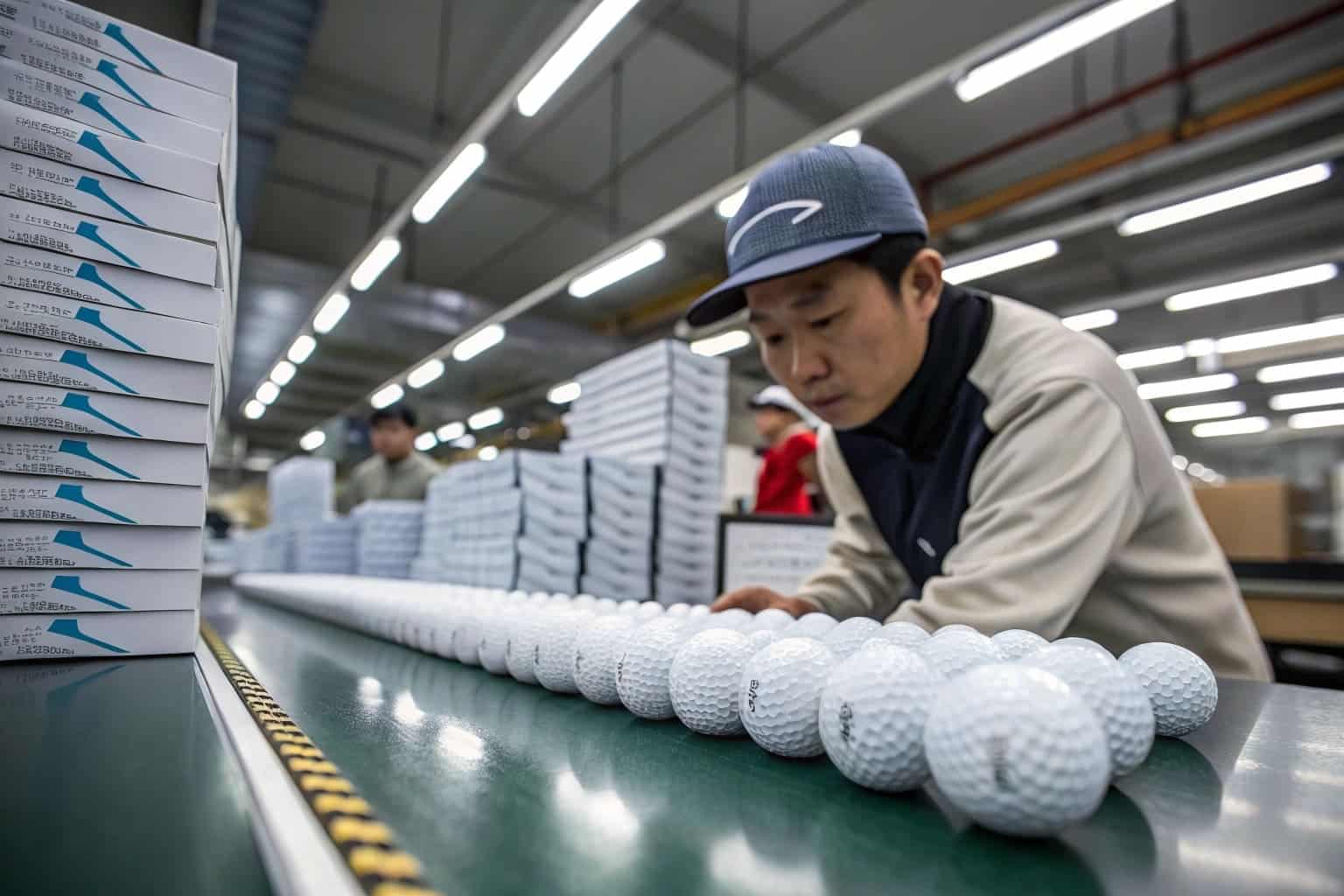
Clarification Module
✅ Many “American” golf balls are actually made in China · True
Most budget lines sold by US brands are OEMed in China with imported resins and local labor.
What’s the cost of golf balls made in China?
Golf balls made in China typically cost \$0.50–\$1.20 each, depending on material, volume, and packaging.
Cost advantage is one of the top reasons buyers choose China. Bulk orders over 10,000 dozen unlock best rates, while small runs under 1,000 dozen cost more due to mold setup and manual coating.
Table: China vs US vs Vietnam cost comparison
| Region | Cost per Ball | MOQ | Common Cover | Lead Time |
|---|---|---|---|---|
| China | $0.50 – $1.20 | 3,000 doz | Surlyn/Urethane | 12–25 days |
| Vietnam | $0.70 – $1.60 | 2,000 doz | Surlyn | 15–30 days |
| USA | $1.80 – $3.20 | 1,000 doz | Urethane | 20–35 days |
MOQ, mold, and sample costs
Mold fees range $200 – $800; samples cost $80 – $150 per dozen with refund upon PO. Most OEMs credit sampling fee against final invoice when MOQ is met.
Common cost-saving traps
Watch for cheap paint layers, substandard resin, and inflated dimple count. These affect performance and durability. Also check for false claims like “urethane-like surlyn.”
Case: cost reduction via sourcing switch
Brand C saved $0.96/ball by shifting urethane orders from US to Xiamen. Still passed SGS and USGA conformity tests, and retained 4.5-star Amazon reviews.
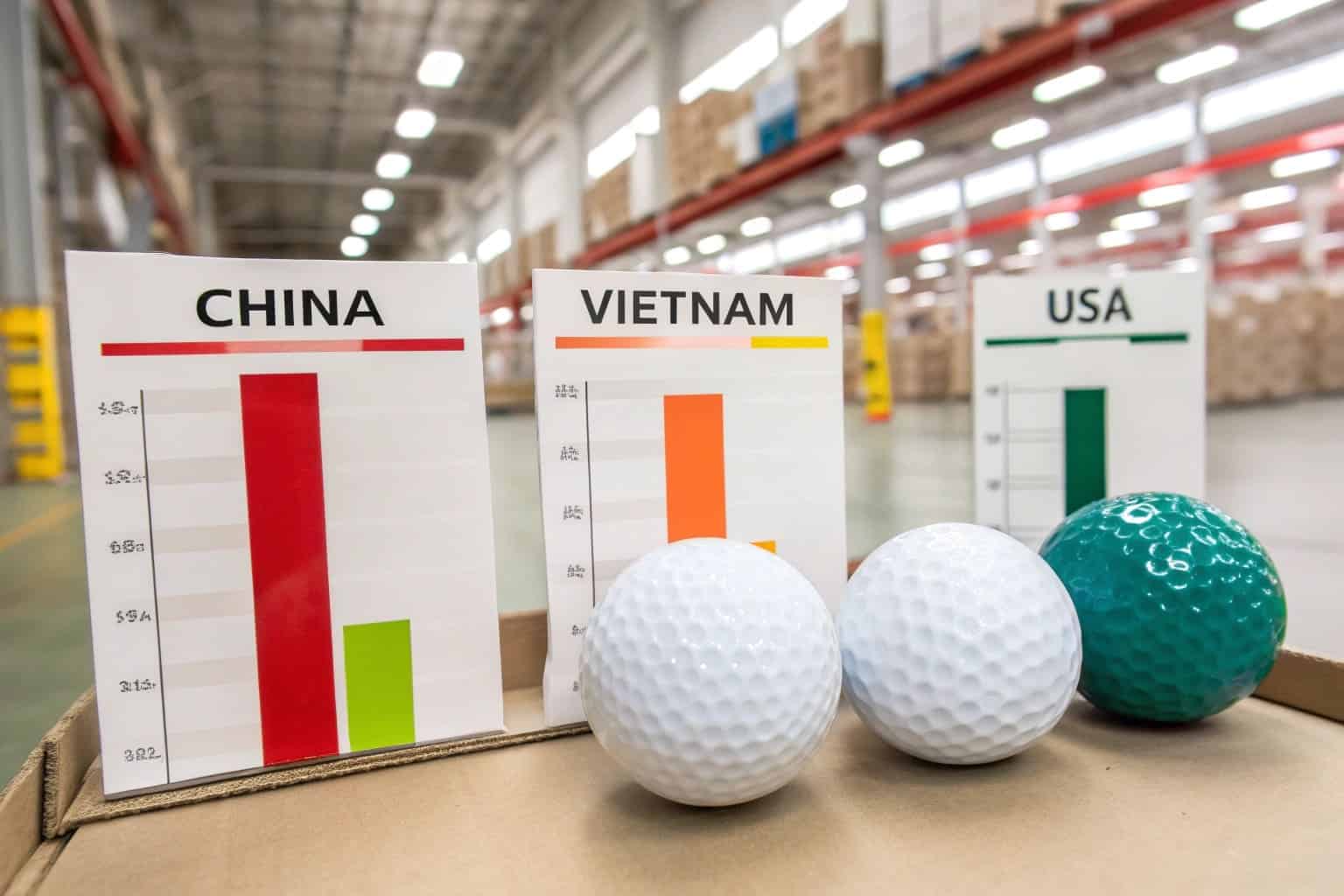
What certifications should Chinese golf ball factories have?
Look for ISO 9001, BSCI, and SGS to ensure factory quality, labor ethics, and export compliance.
These certificates reduce audit risk, especially for EU and Japan buyers. Some factories claim compliance but lack documentation.
Key certifications explained
ISO 9001 covers production systems, BSCI ensures ethical labor, SGS validates material safety. Ask for PDF copies with stamp. Be cautious of “pending” claims.
Requesting audit checklists
Request Golfara’s 18-point OEM factory audit checklist or create one based on your market’s needs. Always include spot-checks for material batches and inner core diameter.
Export compliance for key markets
EU requires REACH, US needs CPSIA, Japan mandates material labeling under PSE Law. These differ in test scope and document retention time.
Real case: customs rejection due to missing certs
Buyer D’s cargo was held 17 days due to missing REACH and outer packaging mislabeling. Penalty: €2,400 and re-inspection delay. Avoid by requesting label mockup approval.
Key Takeaway
Yes, most surlyn golf balls are made in China — but not all are equal. Quality, resin origin, and certification vary widely. Buyers should always request documentation, third-party test reports, and audit data before choosing a supplier.
You Might Also Like
Want to compare construction types before choosing golf balls made in China? Understand how layering affects spin, feel, and cost — read: 2-Piece vs 3-Piece Golf Balls: Bulk Buying Guide 2025

